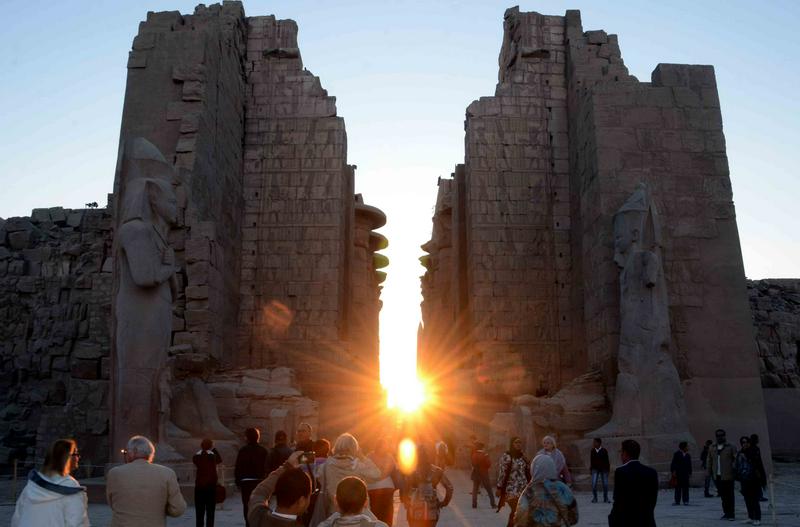Ancient Structures Mark the Winter Solstice
By | December 20, 2018

Tomorrow, December 21, is the Winter Solstice, the shortest day of the year in regards to the number of daylight hours. In the Northern Hemisphere, the Winter Solstice marks the turning point in the calendar…the day that the sun begins to stay around longer and longer, signaling the coming Spring. People in antiquity figured this out pretty quickly. So important was the Winter Solstice that they even erected huge stone structures to herald the Winter Solstice. England’s Stonehenge is probably the most well-known of these monuments, but it certainly isn’t the only one. Let’s examine how ancient cultures around the world noted the coming of the Winter Solstice.

Stonehenge
On England’s Salisbury Plain sits a collection of huge boulders that have fascinated mankind for centuries. Arranged in a circle, huge megalithic stones were set on their ends in a precise manner by Neolithic people some 5,000 years ago. When the sun rises on the morning of the Winter Solstice, shafts of light align perfectly through the stones. Archaeologists have been able to uncover evidence that the Winter Solstice was a time of great feasting at Stonehenge when it was newly-constructed. They were celebrating the fact that the days were, indeed, becoming longer again. Ancient people must have been terrified that one year, the daylight hours would get shorter and shorter until their world was plunged into perpetual darkness and perpetual winter.

Temple of Karnak, Egypt
Near Luxor, Egypt, the sprawling complex of the Temple of Karnak, constructed between 1971 and 1926 BC, is aligned with various important celestial events, including the Winter Solstice. On the day of the Winter Solstice, the sun rises between the portals of the Great Gate of Nactanebo and bathes the sanctuary of Amoun-Re in light.

Tulum, Mexico
One of the ancient Mayan cities of the Yucatan Peninsula, Tulum thrived until Spanish explorers arrived in the 15th century, bring disease with them. Many of the huge stone temples and buildings of the Mayan’s Tulum city still remain. On one such temple, there is a small hole at the top of the structure. When the sun rises on the winter solstice, it perfectly aligns with this hole. The shaft of sunlight creates a spectacular starburst effect as it filters through the hole.

Newgrange, Ireland
Predating Stonehenge and the Egyptian Pyramids, Ireland’s Newgrange is an ancient monument built as a mound. The circular, grass-covered mound has tunnels cutting through it. Artifacts found inside indicate that the place was used for worship. During sunrise on the Winter Solstice, sunlight floods the main chamber from a precisely aligned shaft, leading researchers to surmise that the Winter Solstice was a special day for the Irish builders and that the main chamber may have been used for solstice-related worship or celebration.

Newport Tower, Rhode Island
An odd, ancient, eight-legged stone structure in Newport, Rhode Island, has been the subject of debate since before the United States was a country. It may be the remains of an old windmill or church, or something more. On the Winter Solstice, light shines through a tiny window and illuminates the keystone above a doorway on the opposite side of the structure. It is not sure if the keystone is itself significant or if it was simply the means of noting the arrival of the Winter Solstice.

Goseck Circle, Germany
In Saxony-Anhalt, Germany, there is a series of concentric rings dating back to 4900 BC. The largest, outermost ring has a diameter of 246 feet. This outer circle has two openings dug in it. After much research, archaeologists realized that the openings correspond to the sunrise and sunset on the Winter Solstice, leading to speculation that the site may have been used for rituals or sacrifices on the Winter Solstice.

Cerro del Gentil Pyramid, Peru
A recent find is the stone lines at the Cerro del Gentil Pyramid in Peru. The stone lines are not found at the pyramid. In fact, they are located more than a mile away, to the southeast of the structure. The lines run about 1,650 feet toward the pyramid. In 2013, scientists used 3D software to determine that the stone lines converge at the Cerro del Gentil Pyramid at the exact spot where the sun sets on the Winter Solstice.

